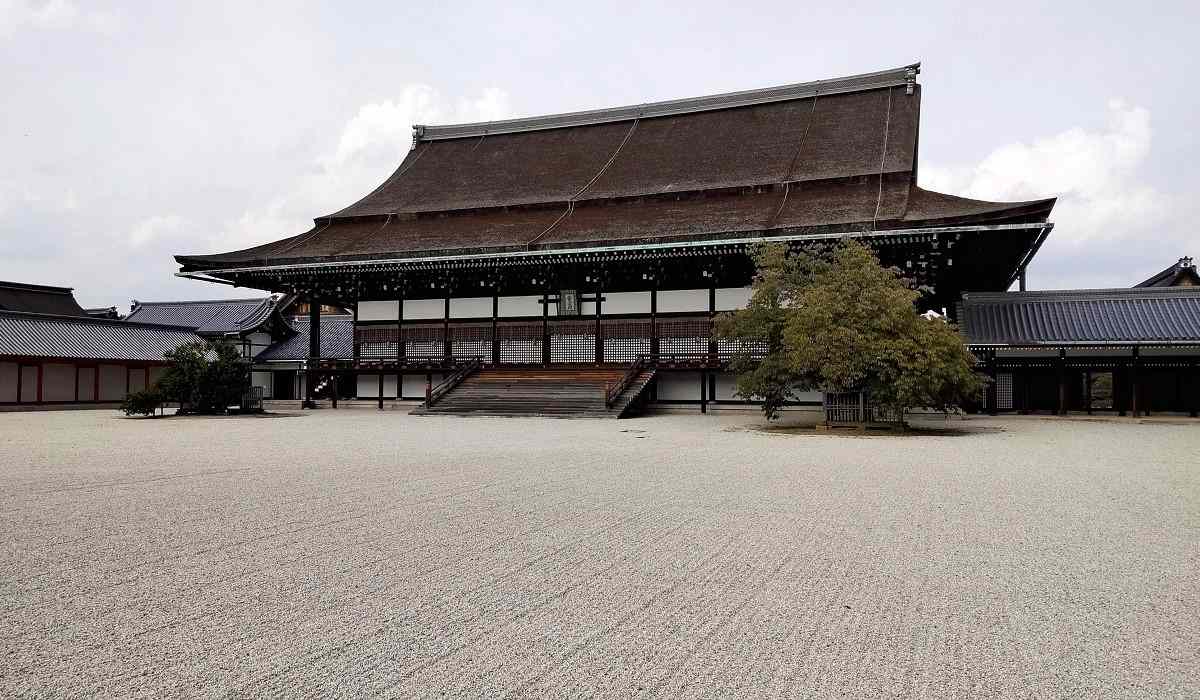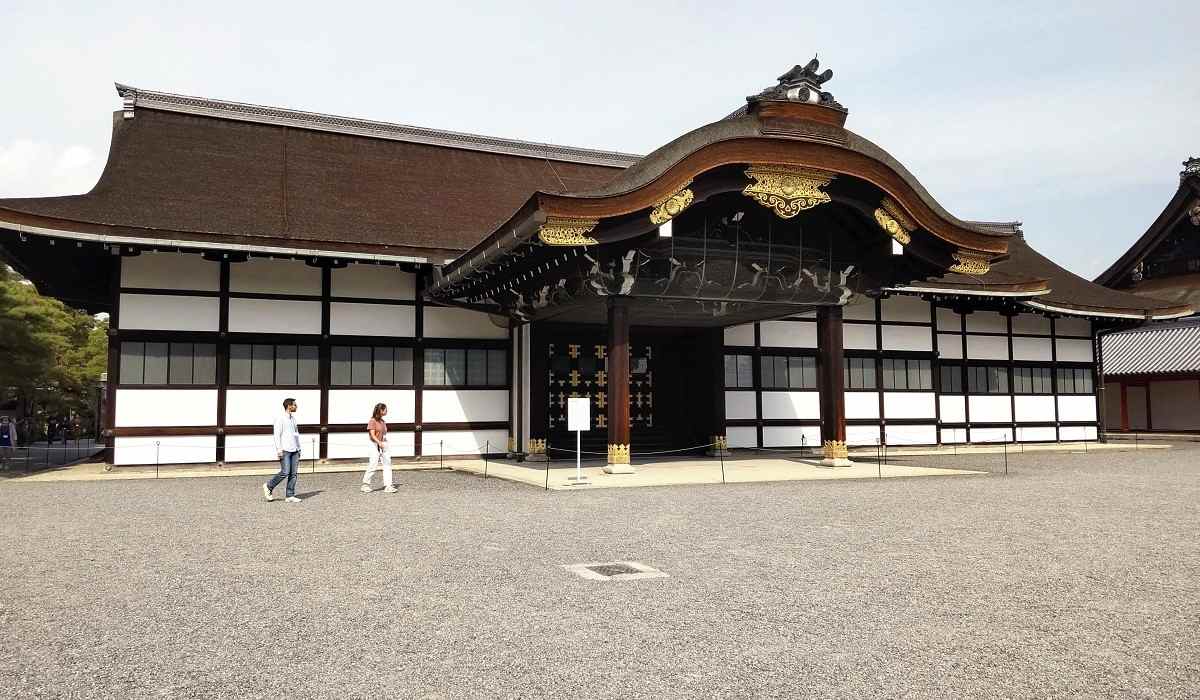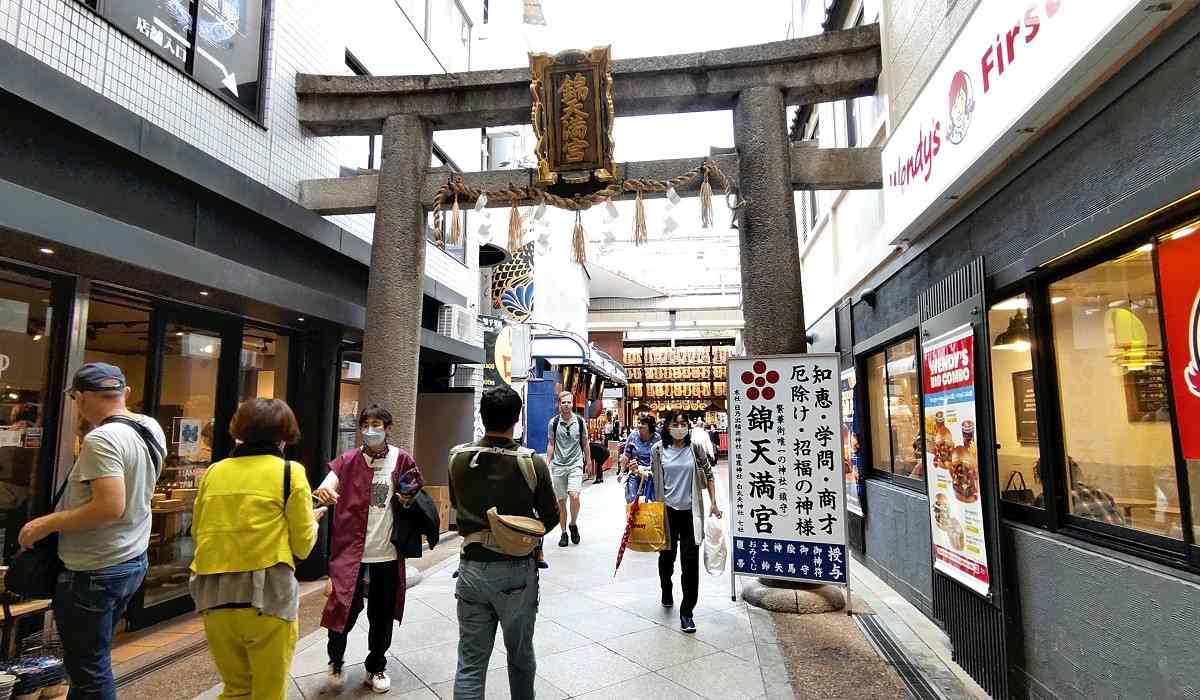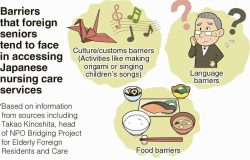Secrets of Kyoto / The First Famous Japanese Travel Guide and the Changing Face of Kyoto

The Kyoto Imperial Palace in Kamigyo Ward, Kyoto, still has a building with a karahafu gable. The building in this photo shows Shinmikurumayose (New Carriage Porch), used by the emperor to enter the Shishinden hall.
16:27 JST, December 7, 2023
Sightseeing trips became popular among ordinary Japanese people in the mid-Edo period (1681-1780), nearly 100 years after a long period of wars and upheavals had ended. As major roads and post towns were well developed, the flow of goods increased and ordinary people became more financially stable. Even women, though usually accompanied by men, were able to travel.
There were 53 post towns with accommodation facilities along the roughly 492-kilometer Tokaido road connecting Edo (present-day Tokyo) and Kyoto. Women who started walking in the morning were usually able to reach another post town two or three towns away by night.
Around the same time, “Grand Tours” became popular in Europe. The term refers to horse-drawn carriage trips by young, upper-class British men to Italy or France accompanied by their servants and tutors. In Japan, ordinary people carried their baggage on their own and traveled on foot.
A typical itinerary in those days, no matter where they started, first headed for the Ise Jingu shrine, the country’s most venerable sanctuary, in Ise, Mie Prefecture. Travelers offered prayers there, and then, using their trip as an excuse to visit the old capital, headed for Kyoto.
Since Kyoto had many sightseeing spots, travelers needed guidebooks. The first best-selling guidebook on Kyoto was “Miyako Meisho Zue” (Pictorial guide to scenic spots in Kyoto), published in 1780 and comprising six volumes.
“Meisho” is a Japanese word that shortens the phrase “Yumei na Basho” (famous place). The word originally referred to shrines, temples and scenic spots appearing in waka poems by famous poets. Most modern Japanese people have little knowledge of classical waka poetry, but people of the past must have been at least somewhat aware that those spots appeared in waka poems.
For that reason, places introduced in the guidebook are not limited to now-popular spots. The book also offers information about places that people rarely visit today.
The book was authored by Akizato Rito, a writer from Kyoto, and illustrated by Takehara Shunchosai, an ukiyo-e artist from Osaka.
To digress a bit, I was born in Kyoto and have visited plenty of famous places in the city many times each. Differences between illustrations in the book and the current state of each place fire my curiosity.
When you see an illustration of the Kyoto Imperial Palace in Kamigyo Ward, Kyoto, you will first notice the shape of the roof of the Shishinden hall, which was one of the most important buildings in the palace used for special events such as enthronement ceremonies. Today, the front roof eaves are straight, while the illustration shows the eaves with a bow-shaped karahafu gable.

The Shishinden hall in Kamigyo Ward, Kyoto, is the building with the highest status in the Kyoto Imperial Palace, where emperors handled political affairs. It was built in 1855 in a Heian period (794- late 12th century) style.

The Kyoto Imperial Palace is illustrated in the Miyako Meisho Zue. The shape of the roof of the Shishinden hall, bottom right, is different from that of the current building.
The present-day Shishinden was built in 1855. At that time, the style of the building was made to reflect the Heian period (794-late 12th century) based on ancient documents. The karahafu gable was favored by samurai and widely used after the Azuchi-Momoyama period (1568-1600).
If you look at the illustration on this page, you might notice people walking right in front of the palace. In the old days, there was a tea house in front of the gate of the palace. Sitting at the tea house, drinking alcohol and watching court nobles coming in and out of the palace used to be one of the key sightseeing activities in Kyoto.
Another example of change is the torii gate of the Nishiki Tenmangu shrine in Nakagyo Ward, Kyoto, which is separated from the Shaden main hall by the souvenir-shop-lined Shinkyogoku street. Today, the gate is a popular photo spot among tourists due to how the ends of both sides of the torii stick into the neighboring buildings. However, in the “Meisho Zue,” the torii stands alone and there is no shopping street to be seen.
These illustrations tell how the old capital’s sites have transformed with the passing of the centuries.

The Nishiki Tenmangu shrine is illustrated in the Miyako Meisho Zue. The area around the torii gate, bottom right, is spacious.

The tips of both sides of the torii gate of the Nishiki Tenmangu shrine in Nakagyo Ward, Kyoto, stick out into neighboring buildings. The torii gate is older than these buildings.
"JN Specialities" POPULAR ARTICLE
-

The Japan News / Weekly Edition (12/12-12/18)
-

Noodle Dining Shunsai / Rich Oyster Ramen to Savor at Odasaga; Experienced 68-year-old Owner Creates Numerous Ramen Varieties
-

The Japan News / Weekly Edition (12/5-12/11)
-

People Keep Loved Ones’ Ashes Close in Special Jewelry, Small Urns as Unique Way to Memorialize Them
-

The Japan News / Weekly Edition (12/19-12/25)
JN ACCESS RANKING
-

Tokyo Economic Security Forum to Hold Inaugural Meeting Amid Tense Global Environment
-

Keidanren Chairman Yoshinobu Tsutsui Visits Kashiwazaki-Kariwa Nuclear Power Plant; Inspects New Emergency Safety System
-

Imports of Rare Earths from China Facing Delays, May Be Caused by Deterioration of Japan-China Relations
-

University of Tokyo Professor Discusses Japanese Economic Security in Interview Ahead of Forum
-

Japan Pulls out of Vietnam Nuclear Project, Complicating Hanoi’s Power Plans



























